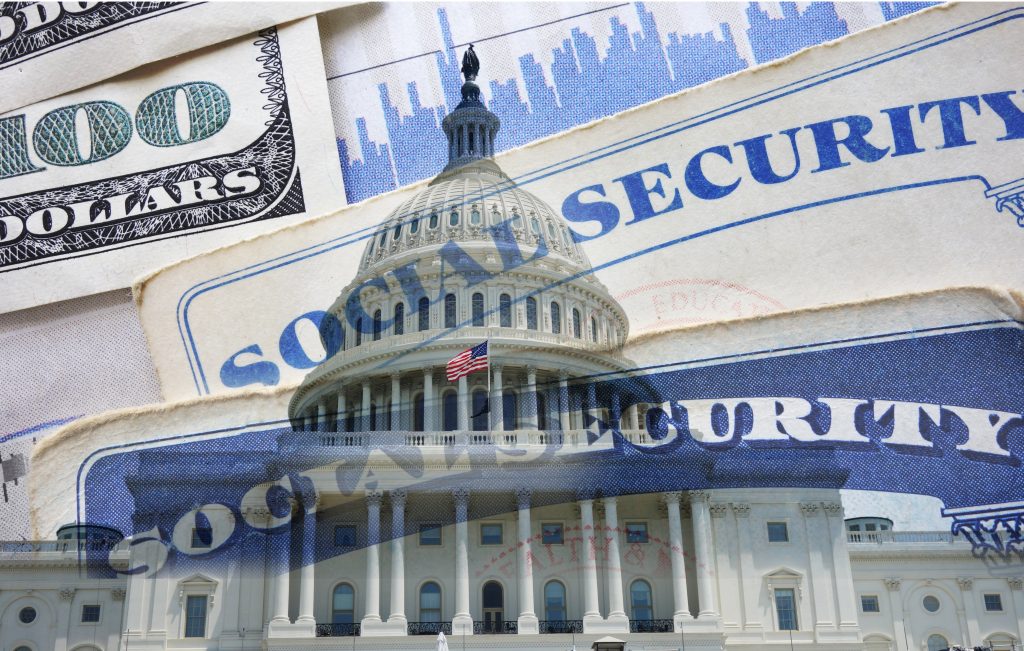As we head into 2025, you can expect a few changes on the horizon for the Social Security program. While many of these changes are relatively minor, they can have a direct impact on your benefit amount.
For the millions of older adults who rely on Social Security to survive, every dollar counts. Whether you’re well into retirement or expect to retire soon, there’s some good news and not-so-good news about the changes coming in January.
One change that could negatively affect your budget
Most of the changes set to take place will positively affect your bottom line, there’s one that could cost you if you’re still working: a higher maximum taxable earnings limit.

Image source: Getty Images.
The earnings limit is the highest income subject to Social Security taxes, and it increases most years to account for cost-of-living changes. The higher the cap, the more of your income you’ll owe taxes on, and the larger your annual tax bill will be.
In 2025, this limit will increase from $168,600 per year to $176,100 per year. That’s an extra $7,500 per year that will be subject to Social Security tax, and at the current 12.4% tax rate (which is split between employers and employees), these workers can expect to pay an additional $930 per year in payroll taxes.
Fortunately, this change will only affect a relatively small percentage of workers. If you’re earning well below the earnings limit, your tax situation won’t change. But if you’re a high earner with an income of more than $168,600 per year, you can expect a heftier tax bill in 2025.
Changes that can increase your monthly income
1. A new COLA is coming
Many of the updates coming to Social Security in the new year will be positive for beneficiaries, including a new cost-of-living adjustment (COLA). Those receiving benefits will earn a 2.5% raise in 2025, coming in at just under $50 per month for the average retired worker.
While some retirees are disappointed that this will be the smallest COLA in years, the silver lining is that consumer costs are steadily decreasing.
The COLA is directly tied to shifts in inflation, so higher-than-average raises signal that costs are on the rise. You may be receiving a smaller raise than you’ve been used to in recent years, but that means everyday goods and services are slowly becoming more affordable.
2. Higher earnings test limits can boost your benefit
Continuing to work while on Social Security can help improve your finances in retirement, but depending on your age and how much you’re earning, it could slash your benefit amount.
If you’re under your full retirement age (FRA) — which is between ages 66 and 67, depending on your birth year — your benefit could be reduced if your income surpasses the earnings test limit. There are two limits depending on whether you will or will not reach your FRA in 2025, and the good news is that both of those limits are going up next year.
- If you will reach your FRA in 2025: The income limit will increase from $59,520 per year to $62,160 per year. Your benefits will be reduced by $1 for every $3 you’re earning over the limit.
- If you will not reach your FRA in 2025: The income limit will increase from $22,320 per year to $23,400 per year. Your benefits will be reduced by $1 for every $2 you’re earning over the limit.
Beginning next year, then, you may be able to keep more of your checks if your income surpasses the limit.
For example, if you’re earning $25,000 per year now and you will not reach your FRA next year, your income is $2,680 over the 2024 limit. That would reduce your benefits by or around $112 per month. But starting in 2025, that same income would be only $1,600 over the new limit, reducing your checks by only $67 per month.
In any case, your benefit amount will be recalculated once you reach your FRA to account for any money that was withheld, so these reductions aren’t permanent. But between now and your FRA, higher earnings test limits mean smaller reductions.
3. There’s a higher maximum benefit amount up for grabs
There is a cap on how much you can receive from Social Security, and next year, that maximum will be increasing from $4,873 per month to $5,108 per month.
Collecting the maximum payments isn’t easy, but it is doable for some by meeting these three requirements:
- Work for at least 35 years: Your basic benefit amount (or the amount you’ll collect at your FRA) is based on an average of your wages throughout the 35 highest-earning years of your career. If you’ve worked fewer than 35 years, you’ll have zeros included in your average, bringing down your benefit.
- Wait until age 70 to collect benefits: Filing at your FRA will earn you 100% of your benefit, but delaying to age 70 will max out your payments. At age 67, the maximum you can receive is $4,043 per month — even if you meet all of the other requirements for the max benefit.
- Consistently reach the earnings limit: Again, the earnings limit beginning in 2025 will be $176,100 per year. To receive the highest possible Social Security payment, you’ll need to have been consistently reaching the earnings limits throughout your career. (For context, 35 years ago in 1989, the earnings limit was $48,000 per year.)
A new year brings plenty of changes to Social Security — some of which are good, and some may be not-so-good. By knowing what to expect heading into 2025, you can prepare your finances accordingly.
The $22,924 Social Security bonus most retirees completely overlook
If you’re like most Americans, you’re a few years (or more) behind on your retirement savings. But a handful of little-known “Social Security secrets” could help ensure a boost in your retirement income. For example: one easy trick could pay you as much as $22,924 more… each year! Once you learn how to maximize your Social Security benefits, we think you could retire confidently with the peace of mind we’re all after. Simply click here to discover how to learn more about these strategies.
View the “Social Security secrets” »
The Motley Fool has a disclosure policy.
 fool.com
fool.com benzinga.com
benzinga.com



